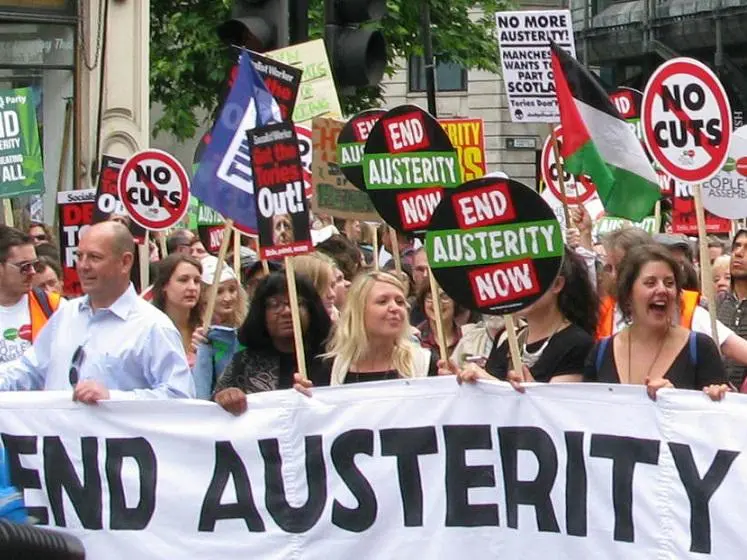Fight the power

The transformation of UK Uncut from a pub gathering to a 30,000 strong campaign group in a matter of weeks is a prime example of how to use the media to mobilise political protest.
Over end of week drinks, a group of friends registered their frustration about the Conservative-led government’s plans for £83bn of public spending cuts, and hatched a plan to target alleged corporate tax avoiders.
They agreed to target Vodafone, angered by the company’s alleged £6bn tax avoidance and protested outside the telecoms multinational’s central London store five days later, their actions setting off a wave of UK Uncut protests across the country.
In his new book, The Circulation of Anti-Austerity Protest, Dr Bart Cammaerts has studied the legacy of UK Uncut and similar protests that emerged after the 2008 financial crisis, finding that the movement influenced the political process in a number of ways.
Rather than looking at discrete achievements of a political action, Dr Cammaerts, Associate Professor in the Department of Media and Communication, views political protests as a circuit of moments which interact and influence each other.
He says: "The metaphor of the circuit means that the protest doesn’t have a beginning and end point, it’s a constant dynamic."
Dr Cammaerts highlights the importance of the media in organising, communicating and mobilising the political protesters. The "circuit of protest" is comprised of four key moments.
The first moment is about messaging, and how the movement defines itself to develop a collective identity for the group, set itself objectives and denotes its ideological enemies. This is done by through a range of media; leaflets, posters, and through social media, blogs and websites.
The second moment is a set of communicative practices that are developed by the movement, such as how it uses communication to coordinate and organise itself internally or how it communicates its objectives externally. These interactions also provide an important historical document of how a movement has evolved. Dr Cammaerts calls this the "remembrance of the movement."
The third moment concerns the wider media, and how news outlets like newspapers and broadcasters, represent the political movement.
The external media’s reporting of a protest will sometimes influence and inspire other movements internationally. Dr Cammaerts gives the example of Occupy Wall Street, a 2012 encampment in New York City, protesting against inequality and corporate influence on government, inspiring and collaborating with Occupy in London, a protest outside St Paul’s Cathedral in central London which had similar aims.
The final moment is how the movement influences public opinion and what Dr Cammaerts calls the "non-activist citizen". He says: "These are people who are not out on the barricades protesting, but they probably vote. They are the audience who ultimately need to be convinced of the aims and the goals of the movement for it to achieve social change."
In terms of the immediate impact of the protest movements that have emerged in the past decade, Dr Cammaerts feels they managed to gain a degree of sympathetic coverage within the mass media.
He says: "Even the right-wing media was not exclusively negative. There was an understanding of the frustrations that gave rise to the anti-austerity movement, such as the tripling of student tuition fees, or the anger that was directed towards the financial sector after the 2008 crash."
Another offshoot of these protest movements is the rise in support for right-wing populist parties, according to Dr Cammaerts: "The anti-austerity message generated anger towards those deemed responsible, the financial companies and multinationals who were avoiding tax, but it also tapped anger towards those at the bottom of society".
This helps explain the unexpected political developments in the past two years. Dr Cammaerts traces the rise of Labour leader Jeremy Corbyn and Bernie Sanders in the democratic primaries to the anti-austerity sentiment. He also finds it fed a right-wing populism evident in the leave campaign in Britain’s EU referendum, and Donald Trump’s unlikely success to become American President.
Dr Cammaerts says: "People didn’t only kick to the top of society, the 1% and the corporations, they also kick to the bottom of society, blaming the immigrants, the foreigners, and the so-called undeserving poor."
"Both sides of the political spectrum co-opted part of the anti-austerity movement, with its message resonating with the broader population," Dr Cammaerts adds.